
views
Deciding if a Red-Eared Slider Turtle is for You
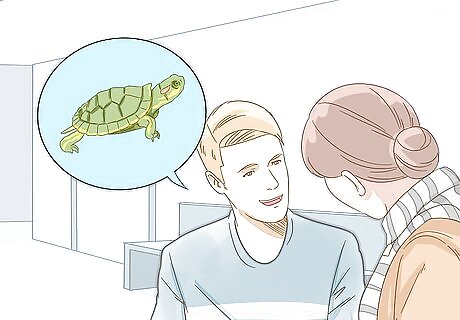
Learn about red-eared sliders. Ask around to see if any friends have sliders. You can ask them about the advantages of having a pet turtle, as well as the challenges. If you don't know anyone with a red slider, go to the pet store and speak to employees that are familiar with the turtles. Better yet, spend a little time interacting with a red-eared slider at the store. Make sure you're aware of what goes into caring for a turtle.

Consider the time commitment. The average lifespan is around 20 - 30 years, with some sliders living even longer than this. Be sure your future lifestyle can adapt to include a long term turtle companion. If you're simply getting a turtle so your child can have a pet, realize that the turtle will be your pet for a long time.

Think about providing all the necessary equipment and supplies. Just like any living creature, red-eared sliders start out small but grow in size as they mature. A fully grown slider needs a tank with a usable floor space at least four times the area of the adult's hard shell, so take this into account when purchasing a young turtle. If you are getting more than one turtle, be sure you have enough tanks to separate the turtles as necessary. Male red-eared sliders tend to pester the females. This can be so extreme that the females stop eating. For this reason males and females are best kept separately.

Keep costs in mind. This includes such things as electricity to heat the aquarium, a thermostat to monitor water temperature, water pumps for aeration, a water filter designed to cope with turtle waste, and last but not least food. Even though the price of the turtle is low, they are not necessarily a cheap pet to keep. If you're concerned about the expense of a red-eared slider, it may help to create a rough estimate of the ongoing costs before you buy the turtle. This may help you decide if you're willing to invest in the pet.
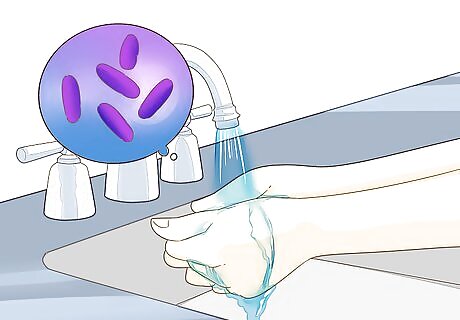
Consider the risk of salmonella when handling turtles. Be aware that the turtle may harbor salmonella and not be ill itself, while still posing a risk of infection to people. The only safe way of keeping a turtle is to assume he carries salmonella and to exercise scrupulous personal hygiene before and after handling. Hand washing is essential. Because of the risk of salmonella infection, you need to have a separate set of utensils for anything related to the turtle, which are kept washed and disinfected away from other household items.
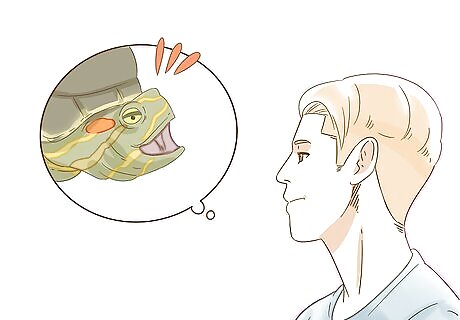
Think about the turtle's personality. Red-eared sliders are not naturally sociable creatures. Wild-caught turtles can be snappy and aggressive. While some captive bred animals may learn to tolerate handling, don't assume your pet turtle will be overly friendly.
Setting Up Housing for Your Turtle
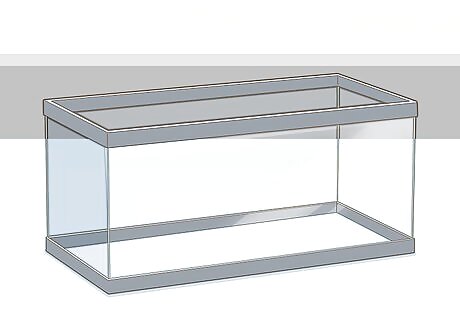
Purchase a tank. One guide suggests having 10 gallons (37.9 L) of capacity per inch of turtle length, plus an additional 15 percent space for a basking area. For the first year, you can get by with a 50 gallon (190 L) tank for a baby, but after that you need at least 120 gallons (450 L). Save money by getting a tank large enough to begin with. Take into account: Water depth: Turtles love to dive and chase food, so make sure the water is plenty deep enough to allow this. Space: Turtles are territorial so make sure they have plenty of space to keep away from one another, or you may need to separate them into individual tanks. Waste: Turtle waste is more solid than fish waste. This needs to be kept well diluted by providing a large volume of water, and /or the use of filter system designed for turtles.

Look for a cheaper tank alternative. The ideal container is a large glass aquarium but these can be expensive. A cheaper alternative is a stock tank. A 100 gallon (380 L) stock tank can be purchased relatively inexpensively. Avoid purchasing acrylic tanks, which are cheaper, but easily scratched by turtle claws. Get a floating dock or a rock that is above the water level. A slider can rest on this when it is not swimming. If you live in a warm climate and have a suitable backyard, you can dig out a pond and use a liner to provide a suitable home for a slider. While this will provide a more natural environment for your turtle, you will have less control over environmental conditions and may need to bring your turtle inside during inclement weather.
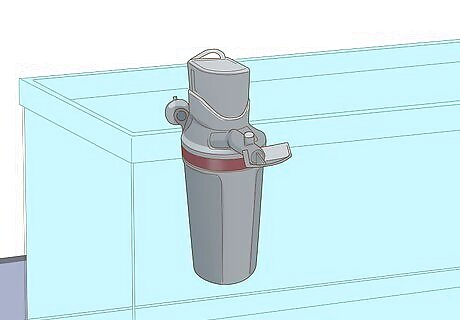
Buy a filter system. The filter keep help prevent bacteria from flourishing in your slider's tank. You don't necessarily have to buy a filter system. You can change the water regularly, which is a highly labor intensive task, or use a filter system designed for turtles. There are different types of filter, depending on your current needs and budget: Under-gravel filter: This needs a large surface area. It's only useful where you have one or two turtles. If it's air pump powered, it will only be useful for small turtles or hatchlings. Use a powerhead if using the filter with turtles older than hatchlings. Internal canister filter: This filter sits inside the tank. The larger the better. This can be both affordable and effective. Look for one that allows for easy cleaning, such as the foam type. External canister filter: This one sits outside of the tank. They tend to be expensive, but they are excellent at filtering, which reduces the number of times you need to change water. One canister filter recommended by many turtle owners is the Rena Filstar Xp3 or Xp4.
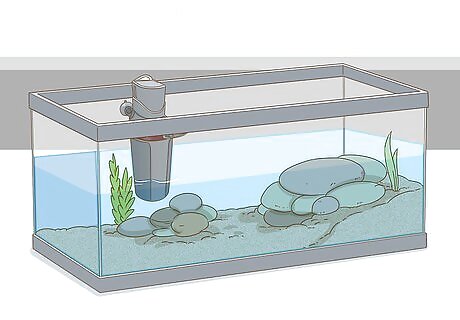
Decorate the tank. Decorations can add diversity and interest to your turtle's habitat. Substrate, the material that lines the bottom of the tank, offers a way for the turtle to move between water and basking rocks with ease. River rocks provide a space for your turtle to bask. You could also make a basking spot from a plexiglass shelf glued to the side of the tank. Check that the glue is non-toxic. Avoid fish tank gravel as it presents a health risk––it could fatally block your turtle's intestines if swallowed. Also, carefully consider using water plants. While they can make the tank look nice and help with filtration, your turtle may be tempted to eat them. If you notice this happening, remove the plants and wash the tank. Place a well-fitting screen over the top of the tank to prevent a daredevil escape and to catch anything accidentally dropped from above.
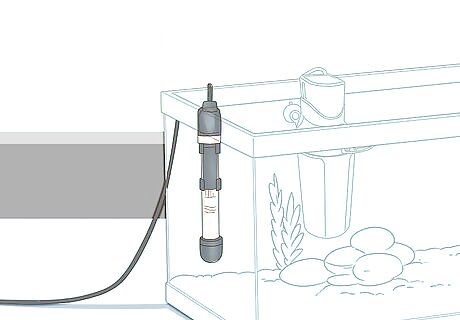
Set the correct temperatures. The water should be 80 - 82 degrees Fahrenheit ( 26.5 - 27.5 Celsius) for a hatchling or a sick turtle, and 77 - 80 degrees F (25.5 - 26.5 C) for a healthy turtle over a year old. The basking (dry land) area should be 10 degrees F (6 degrees C ) warmer than the water to entice the turtle to warm up by basking. The air temperature in the tank needs to be around 75 - 82 degrees Fahrenheit (24 - 28 degrees Celsius).
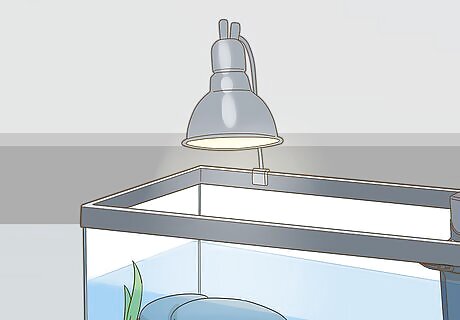
Use the right kinds of lights. Turtles rely on UVA and UVB lights for vitamins, as well as a heat light. UV light does not travel through glass, so it is very important that you get a 5% or more UV lamp. The bulbs should be replaced about every 6 months. The heat light keeps the basking area temperature 10 degrees higher than your water temperature. Your turtle shouldn't be able to reach the lighting, since the bulbs can burn. Screw the lights tightly out of the way of the turtle. Also, never leave a glass or plastic tank in full sunlight as it will quickly overheat.
Obtaining Your Turtle
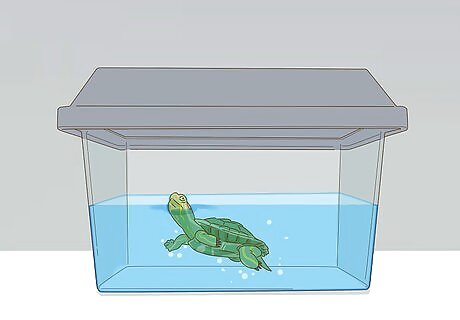
Purchase your turtle. Never take a turtle from the wild. Not only is this cruel and unfair to the turtle, it is also illegal in most states. If you still are determined, be sure you have the legal paperwork to do so. The kindest thing you can do is to get an adult turtle that is no longer wanted, and there are a lot of abandoned turtles that need homes. Check out availability at adoption, rehoming or turtle rescue organizations. You can also try reputable breeders to get your turtle. Beware of pet stores that keep turtles in poor conditions. A number of turtles are ill before you buy them. Look around and take note of the turtle's behavior, as well as the conditions the turtles are kept in. The water in the tank should not smell. If it does this is a sign the turtles have not been cleaned out regularly and are more likely to become sick. It is not recommended to buy from large breeders, as they usually have bad conditions and lack veterinary care.
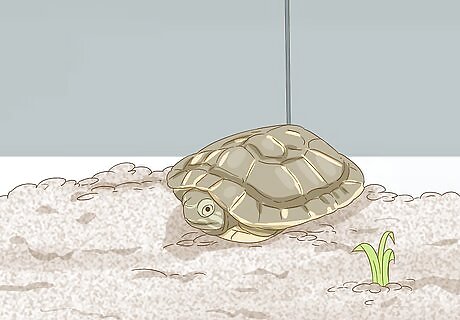
Give your new turtle some space. Your turtle will probably be a little shy when you bring it home. It may take a few days before your turtle feels safe enough to venture forth from the shelter of its shell. Leave it in peace to settle down and wait for it to feel more confident.

Determine the sex of your turtle. You will not be able to determine the sex until a turtle is a mature adult, from 2 to 4 years old. Males will have longer nails and tails than females. Females will also be larger in general.
Caring for Your Turtle Daily

Feed your red-eared turtle the right food. A proper diet for red-eared turtles (and similar aquatic turtle species) should have the following proportions: vegetables and water plants 50 percent, commercial foods 25 percent, and live protein 25 percent. Red eared turtles are happy to store-bought food turtle food, as well as food you've foraged for them. Good vegetable choices include: dandelions (the ones in your yard are good if you don't use pesticides), carrot tops, mustard greens, romaine lettuce, carrots, bell pepper, and squash. The best greens are water plants like anacharis, water hyacinth, water lettuce, Frogbit, hornwort, and duckweed. While expensive in a pet store, these are easy to grow in a separate tank or pond, and they are cheap if you buy in bulk online. Red eared turtles don't usually eat fruit in the wild, so avoid it except for an absolute treat. If giving a treat, bananas are a good choice. For commercial food, look for something that has low protein and low fat. Dried shrimp are an absolute no-no! While turtles love the taste of dried shrimp, they offer no nutrients and turtles may refuse other foods for weeks.
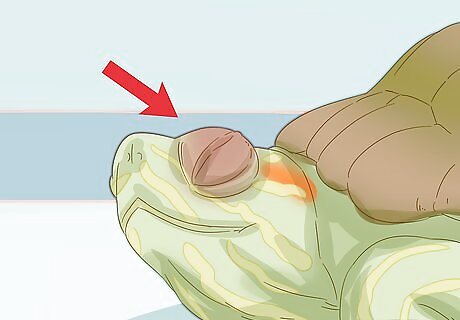
Check your turtle for signs of health problems. There are various conditions and diseases that can occur if the tank water is dirty, if the turtle's diet is poor or for other reasons. Some more common problems to watch for include: Eye infections: The eyes will appear closed, swollen, puffed up or discharging. You may see pieces of tissue coming off. Eye infections are caused by bacteria. The turtle should be seen by a vet and probably needs a topical antibiotic plus upgrading the tank's filtration system. Soft shell: If your turtle's shell is softer than it's supposed to be, your slider may not be getting enough light from your overhead light. If this happens, the turtle's dock may be too small, the water may be too deep, or the turtle is too weak to get on the dock. If this happens, contact your vet or a pet store. It can also mean that it has metabolic bone disease. Furry mouth and refusal to eat: Your turtle has a bacterial infection and should be seen by immediately by the vet for an antibiotic treatment. Weak, wheezing, lethargic and holding head at an unusual angle: This may be a respiratory infection, such as pneumonia. Immediately take your turtle to the vet. Wounds: Check the tank for sharp objects or a fighting mate. Remove the cause, treat the wound with povidone-iodine solution, and keep it clean. See your vet for more advice. If it's shell is having a crack, then you will need to take a paste of calcium powder and paste it on the crack of the turtle's shell. You can make a calcium paste by mixing pure calcium powder with necessary amount of water.
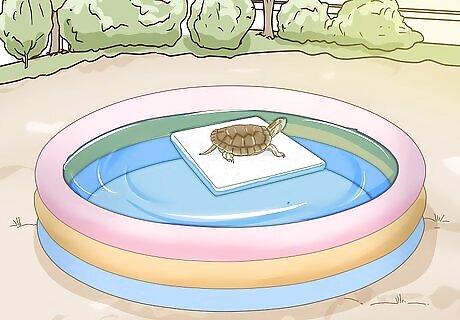
Take your turtle outside sometimes for direct sun. You must supervise outside time, to prevent overheating. One approach is to get a kiddie pool, fill it with some water, and provide something for the turtle to bask on. Make sure to offer some shade for your turtle so it won't overheat.
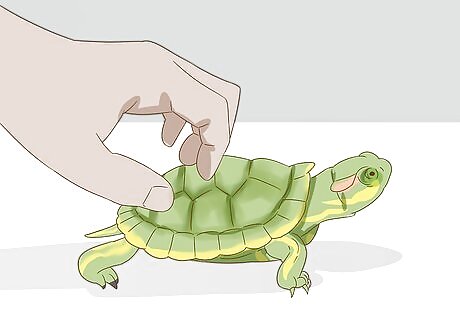
Spend time with your turtle. This is your pet and you'll form a bond, as with any pet, if you spend time together. Handle with care––not all turtles like being held or touched. Some turtles love to have their shells gently scratched, just like a backscratch, or scratching behind a dog's ear. However, be careful, as not all of them enjoy it and may try to bite. Note that their shells have nerve endings in them and they can feel everything. Be gentle. Never touch the mouth of your turtle. This may frighten the turtle causing it to bite. Always approach your turtle by the shell and back of its head.


















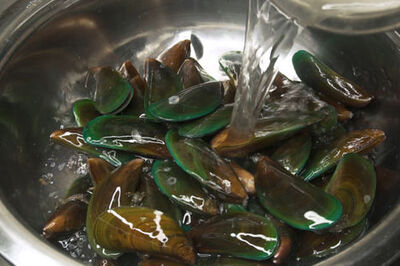
Comments
0 comment